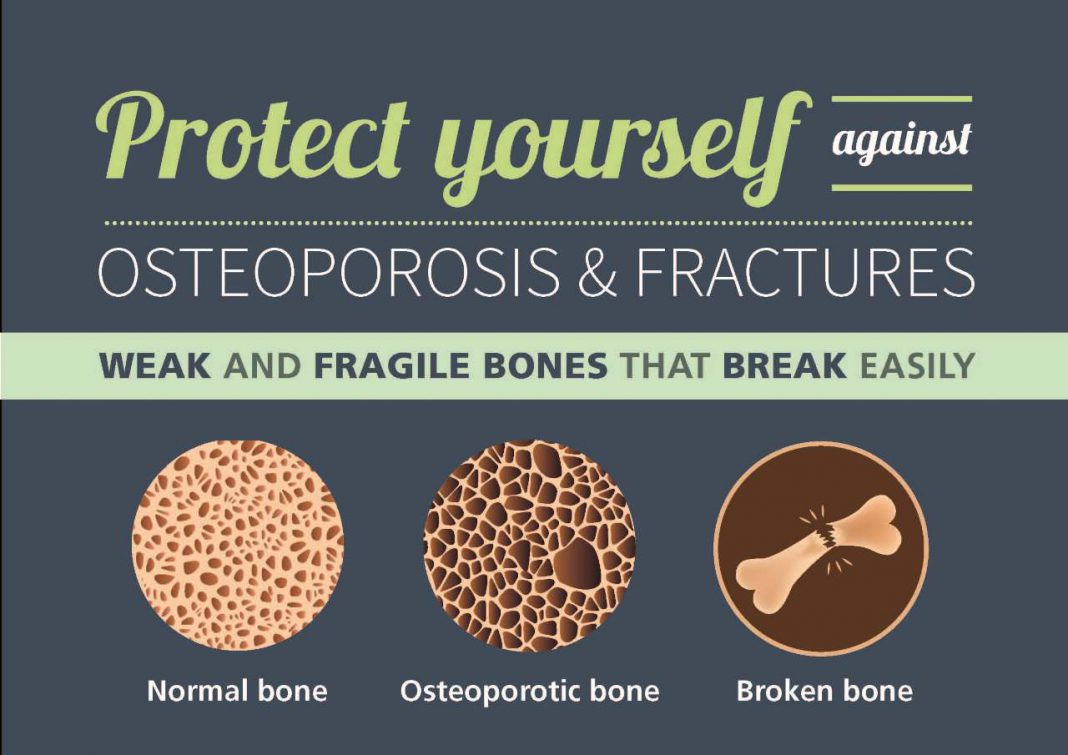In conjunction with World Osteoporosis Day on October 20, the International Osteoporosis Foundation (IOF) urges all adults to be alert to their risk for osteoporosis, a ‘silent’ disease which causes bones to become fragile and break easily.
People with osteoporosis can suffer broken bones as a result of a mere bump or fall from standing height. Worldwide, fractures due to osteoporosis occur in approximately one in three women and one in five men, aged 50 and over – with a fracture occurring every 3 seconds.
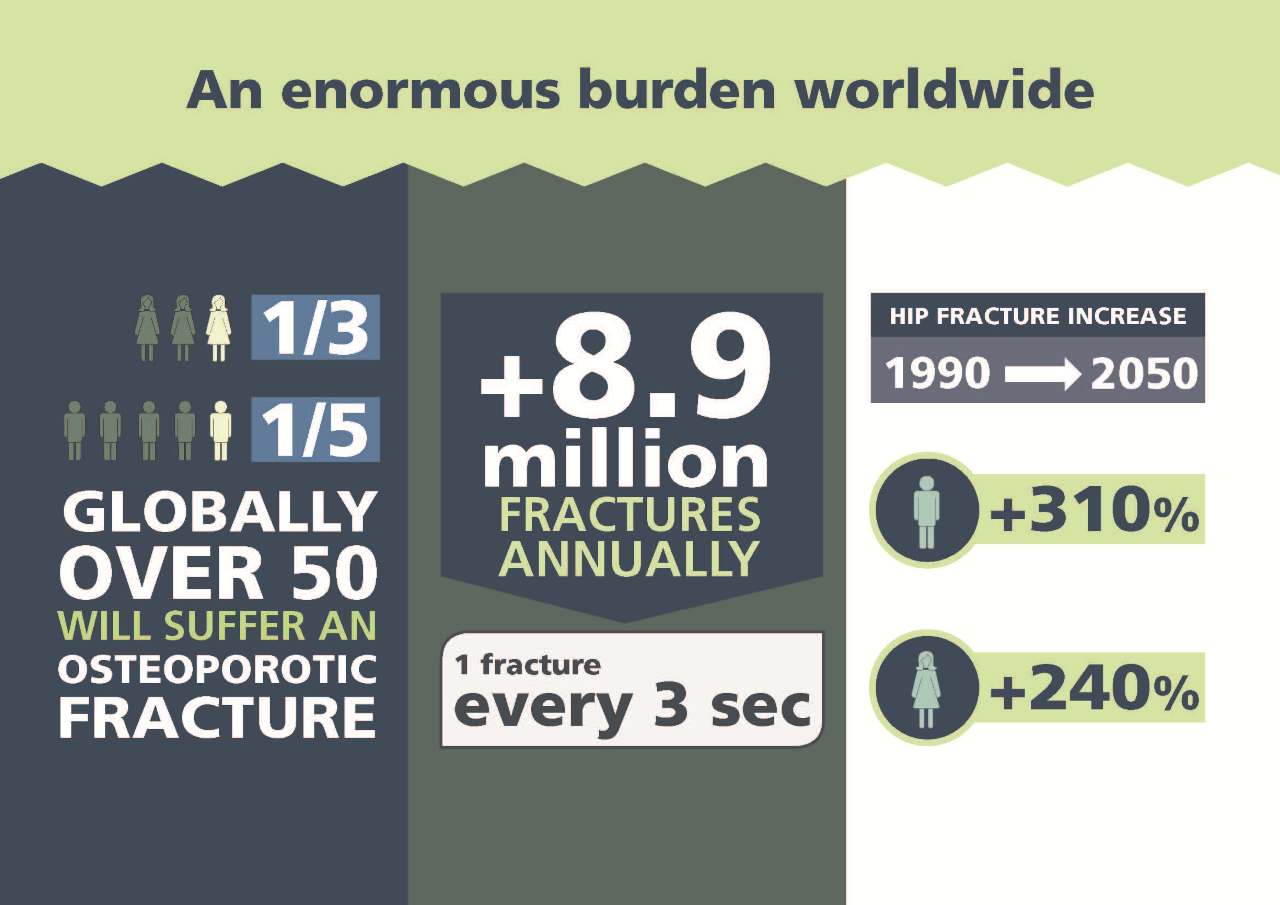
“The danger of osteoporotic fractures to quality of life and independence at older age cannot be overstated,” warned IOF President John A. Kanis. Within a year of a hip fracture, 33% of patients remain dependent or require nursing home care, and up to 24% die. In women over the age of 45, osteoporotic fractures result in more days spent in hospital than many other diseases, including diabetes, heart attack and breast cancer.
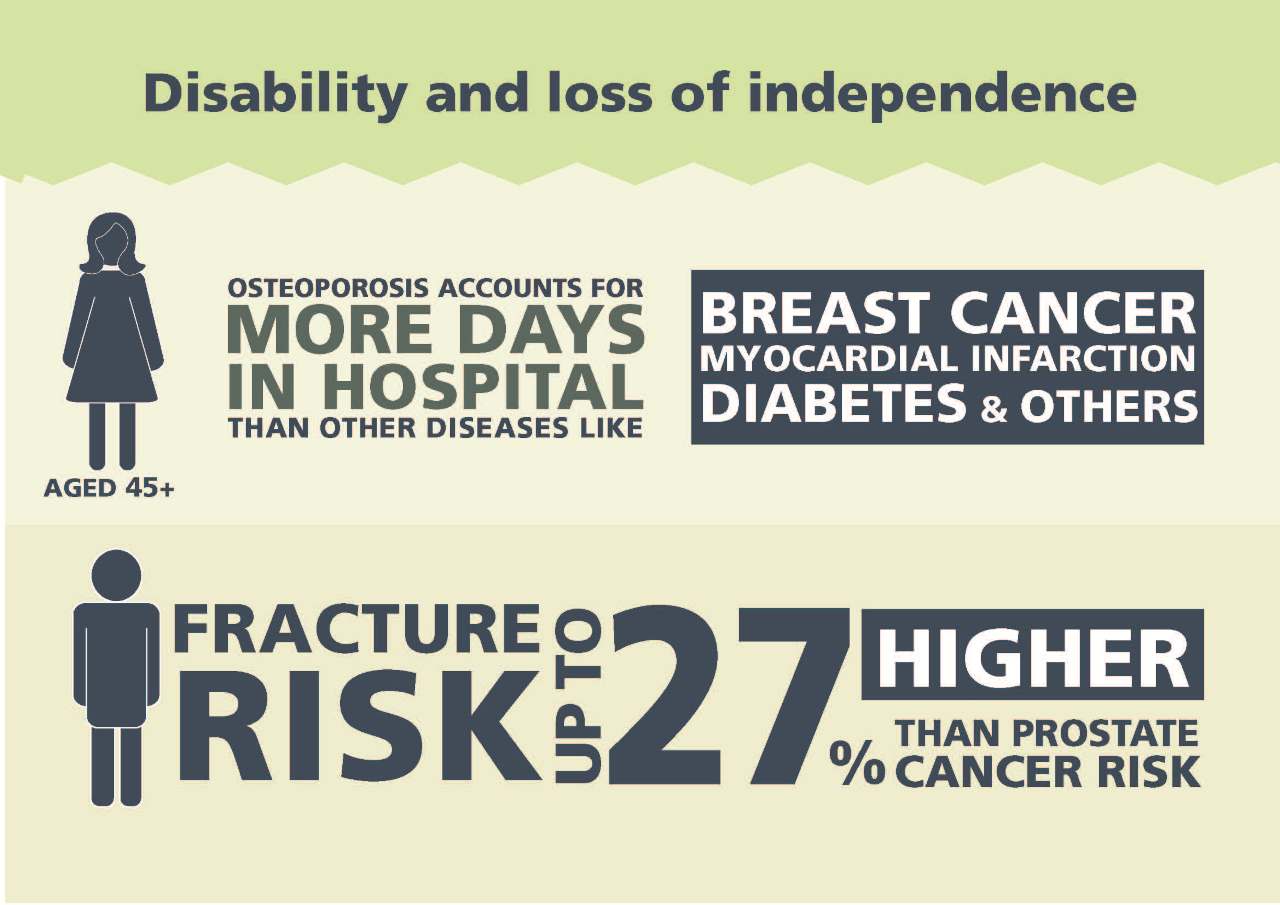
Be alert to your personal risk factors!
A bone-healthy lifestyle lays the foundation for good bone health. This includes a calcium, protein and vitamin-rich diet, adequate vitamin D, regular weight-bearing and muscle-strengthening exercise, and avoidance of smoking or excessive alcohol intake.
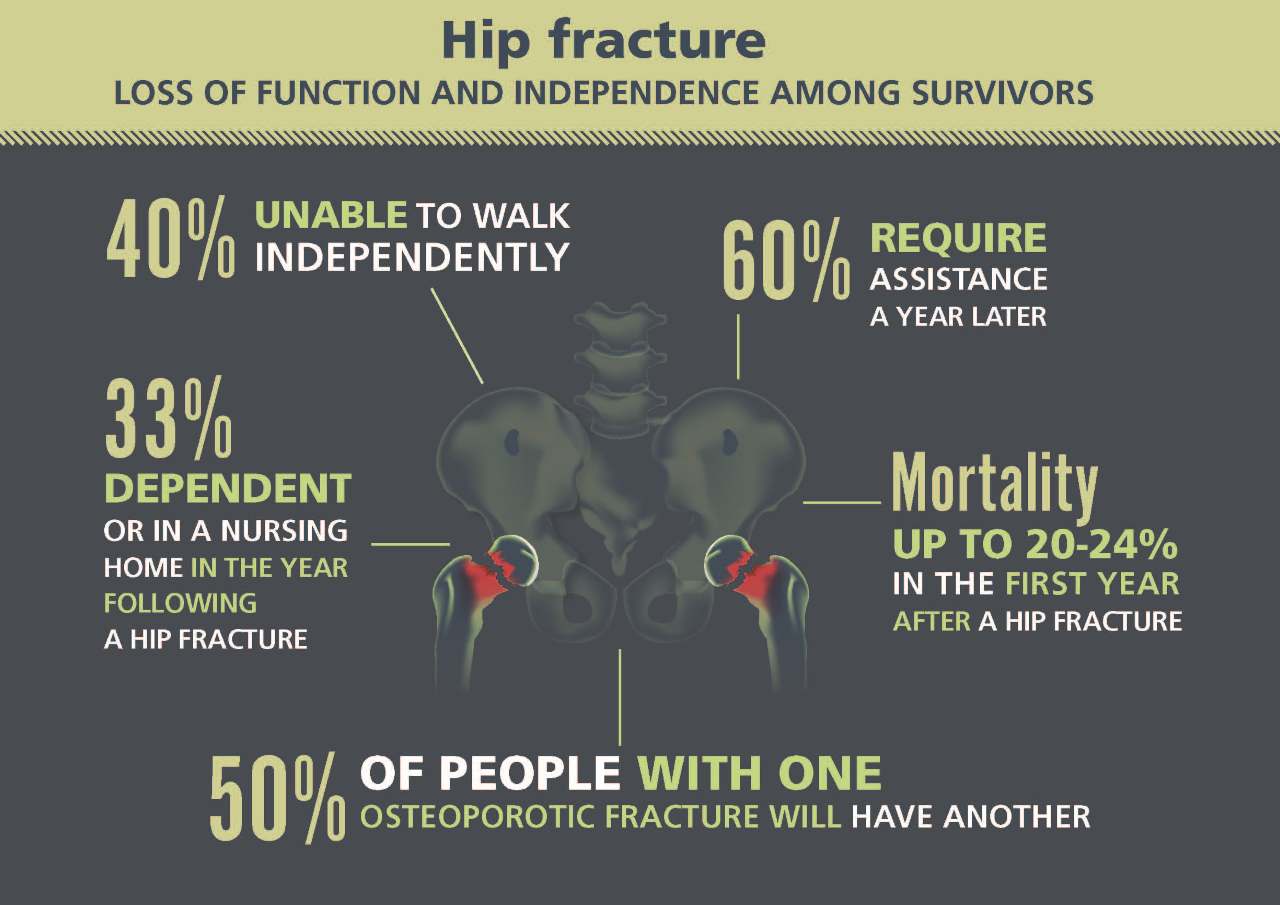
Unfortunately, many osteoporosis risk factors are out of a person’s control. These include a parental history of osteoporosis/fractures, and certain diseases or medications which damage bone health. For example, people with rheumatoid arthritis, diabetes, chronic obstructive pulmonary disease, coeliac or inflammatory bowel disease are at increased risk, as are people who take glucocorticoids, androgen deprivation therapy, or aromatase inhibitors.
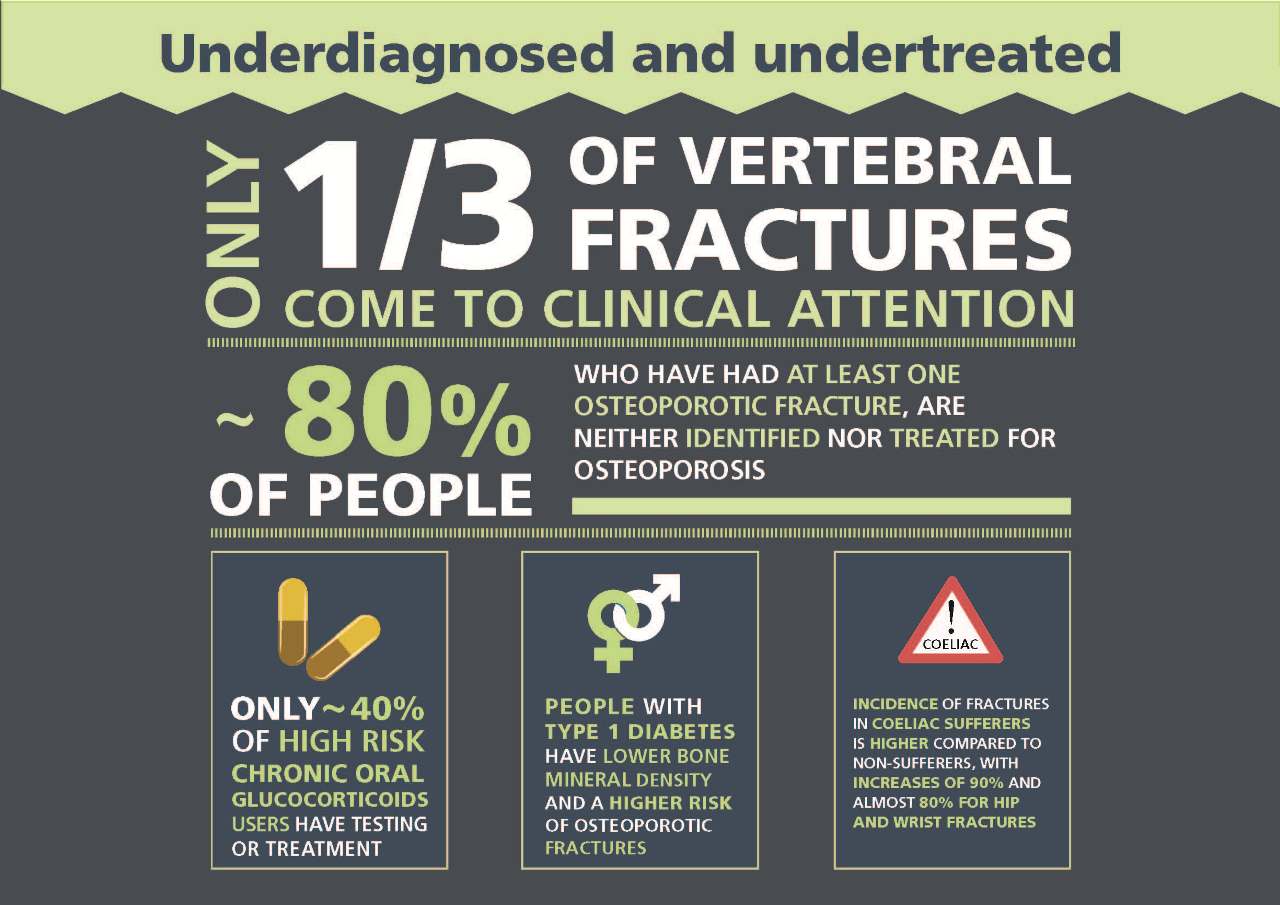
The IOF One-Minute Osteoporosis Risk Test is an awareness tool which alerts you to possible risk factors. Your doctor may also carry out a FRAX® assessment to determine your 10-year risk of osteoporotic fracture.
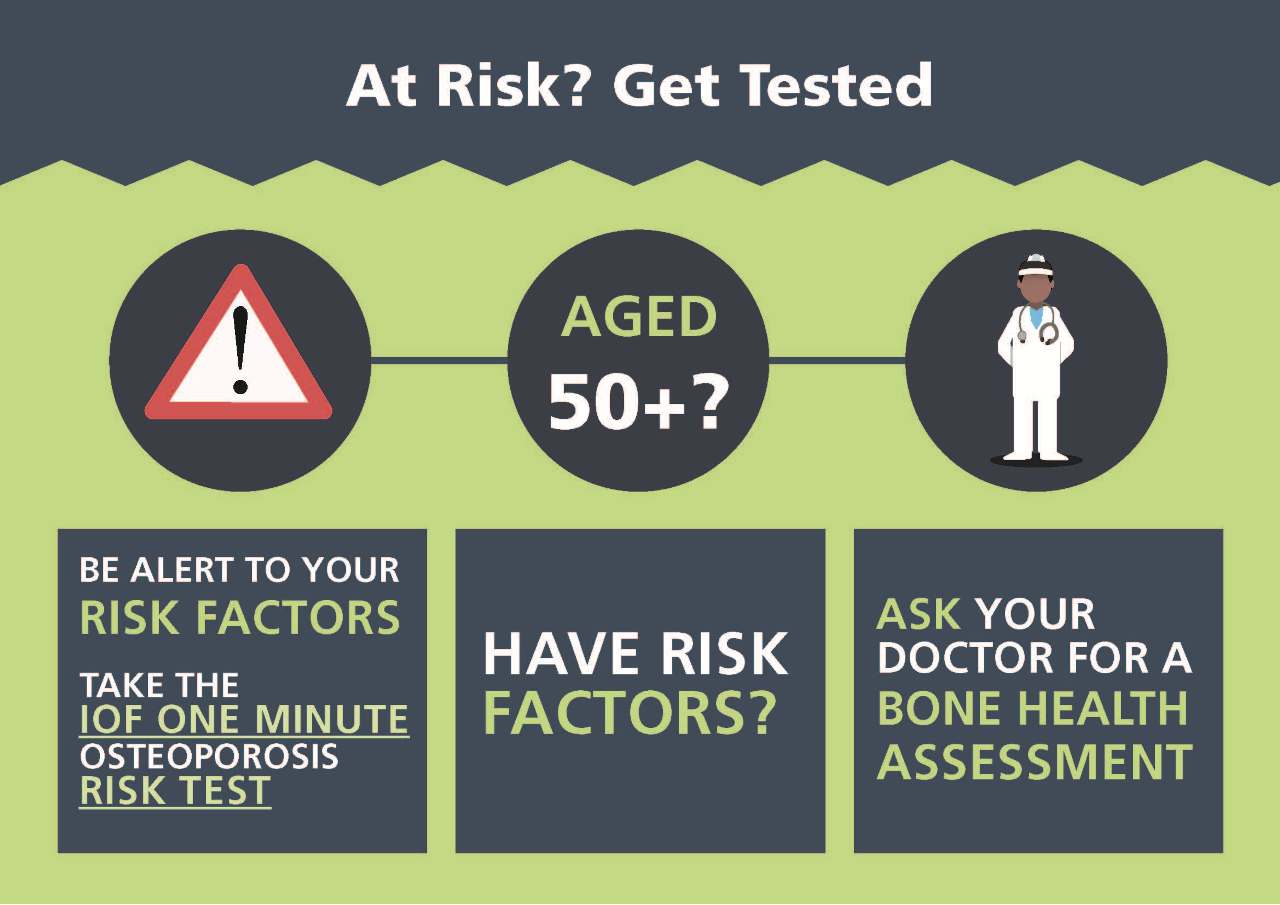
Professor Kanis added: “If you have risk factors I urge you to ask for a bone-health check-up and to make any necessary lifestyle changes. If you are at high risk, you must consider appropriate treatment options for optimal protection against potentially devastating and life-threatening fractures.”
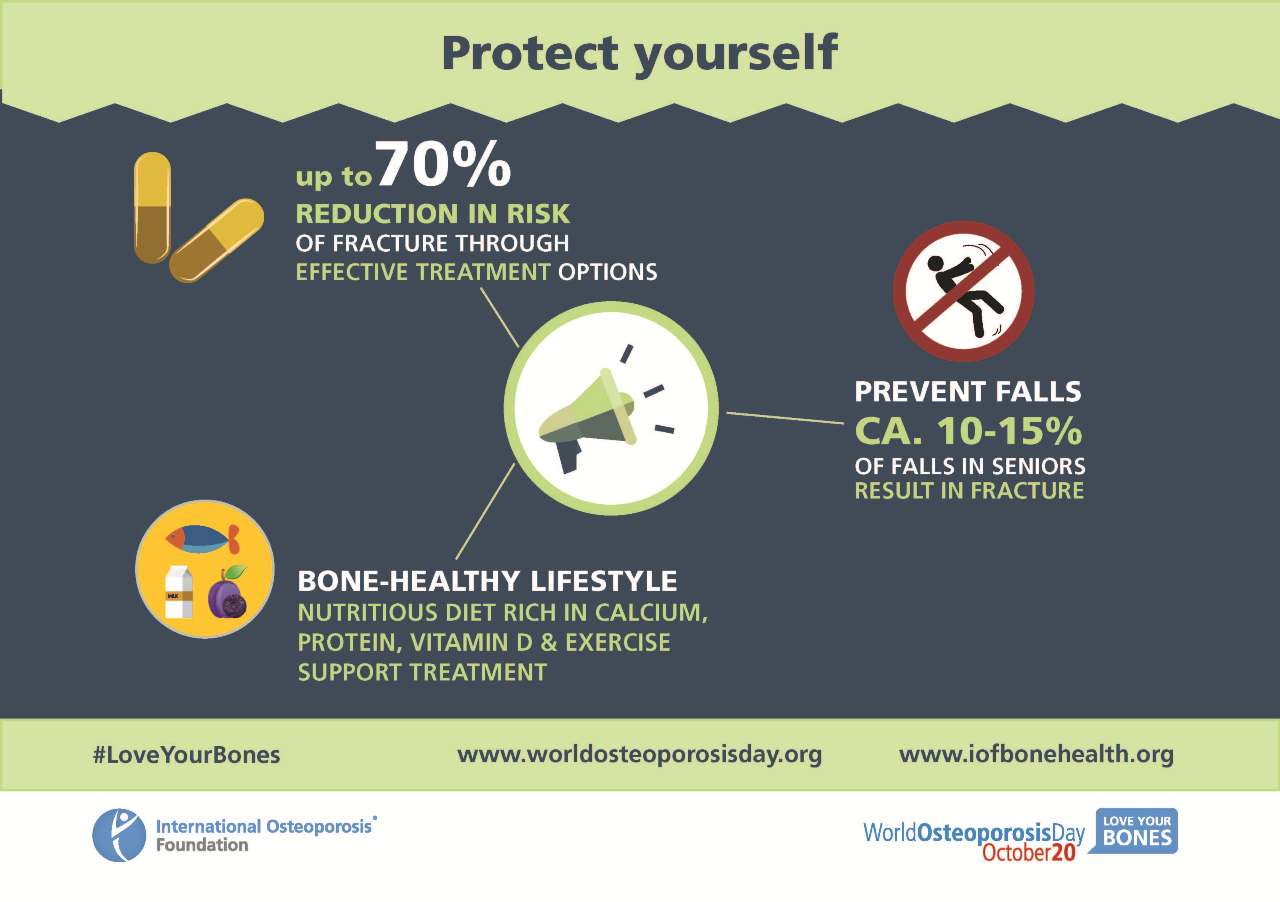
Source: The International Osteoporosis Foundation (IOF)
Read also: Cutting Back on Salt: 8 Tips to Eat Healthy Without Too Much Salt

